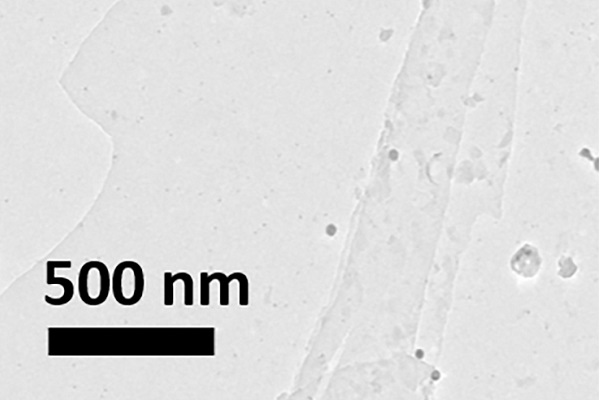Nano-thin piezoelectrics advance self-powered electronics

Magnified image showing nano-thin sheets of the new type of ultra-efficient, flexible and printable piezoelectric material. Credit: RMIT University
Researchers at RMIT University, Melbourne, Victoria has discovered a new type of ultra-efficient, nano-thin material which could advance self-powered electronics, wearables and even deliver pacemakers powered by heart beats.
The flexible and printable piezoelectric material can convert mechanical pressure into electrical energy. It is 100,000-times thinner than a human hair and 800% more efficient than other piezoelectrics based on similar non-toxic materials.
Researchers say it can be easily fabricated through a cost-effective and commercially scalable method, using liquid metals.
ADVERTISEMENT
RMIT vice-chancellor research fellow in the School of Engineering and lead researcher Dr Nasir Mahmood says that the material, detailed in a new Materials Today study, was a major step towards realising the full potential of motion-driven, energy-harvesting devices: “Until now, the best performing nano-thin piezoelectrics have been based on lead, a toxic material that is not suitable for biomedical use.
“Our new material is based on non-toxic zinc oxide, which is also lightweight and compatible with silicon, making it easy to integrate into current electronics.
“It’s so efficient that all you need is a single 1.1 nanometre layer of our material to produce all the energy required for a fully self-powering nanodevice.”
Examples of energy-harvesting technologies that could be delivered by integrating the new material include smart running shoes for charging mobile phones and smart footpaths that harness energy from footsteps.
The material is produced using a liquid metal printing approach. Zinc oxide is first heated until it becomes liquid. This liquid metal, once exposed to oxygen, forms a nano-thin layer on top – like the skin on heated milk when it cools.
“We’re keen to explore commercial collaboration opportunities and work with relevant industries to bring future power-generating nanodevices to market,” Nasir explains.
The research is supported through funding from the Australian Research Council and the ARC Centre of Excellence in Future Low-Energy Electronics Technologies (FLEET).
-
ADVERTISEMENT
-
ADVERTISEMENT

